What We Did (and Didn’t Do) on a Two Day Visit to Madrid
Before we arrived in Madrid we put in the usual intensive shifts of extensive ‘ourtour’ research, consisting of Googling ‘what to do madrid’ and when that returned a long list of museums, art galleries and parks, sending out a Facebook plea asking others ‘what other stuff is there to do’. I know, we’re a cultured couple us two… Given the wonderful opportunity to see world-class art, we should have been bouncing off the walls in excitement, but hey, one man’s wine is another man’s poison. In the end, these are the things we did and saw during two days of pounding the streets of Spain’s capital city.
We’ve written a separate post describing where we stayed with our motorhome in Madrid, and how we got into and around the city, available here.
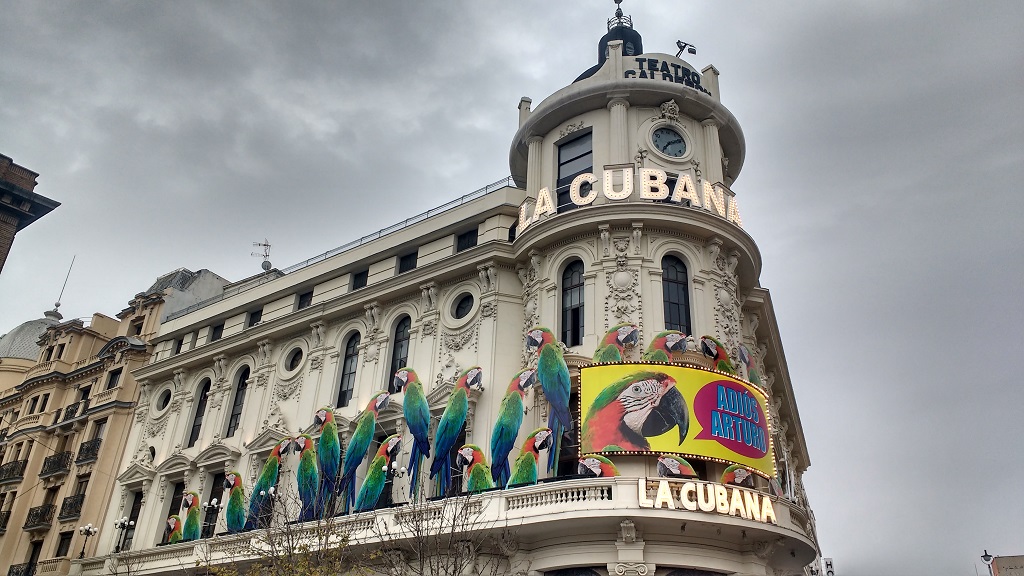
Some Context: It Was Snowing Folks
Before I start, our visit was in January and it was either blowing snow flurries or raining on the days we were in the city (I’m not complaining: Storm Gloria was properly battering Spain to the south of us, we had it easy). Ju had a cold too, so some of the warmer pursuits like wandering parks and gardens or supping a brew in an outdoor cafe were less attractive than they might be. The authorities were also in the process of sprucing up what is already a lovely city to wander, so a large area of road was dug up near the Royal Palace (exposing fascinating ruins beneath) and a large city park above a metro stop had been completely removed, presumably awaiting replanting before the summer.
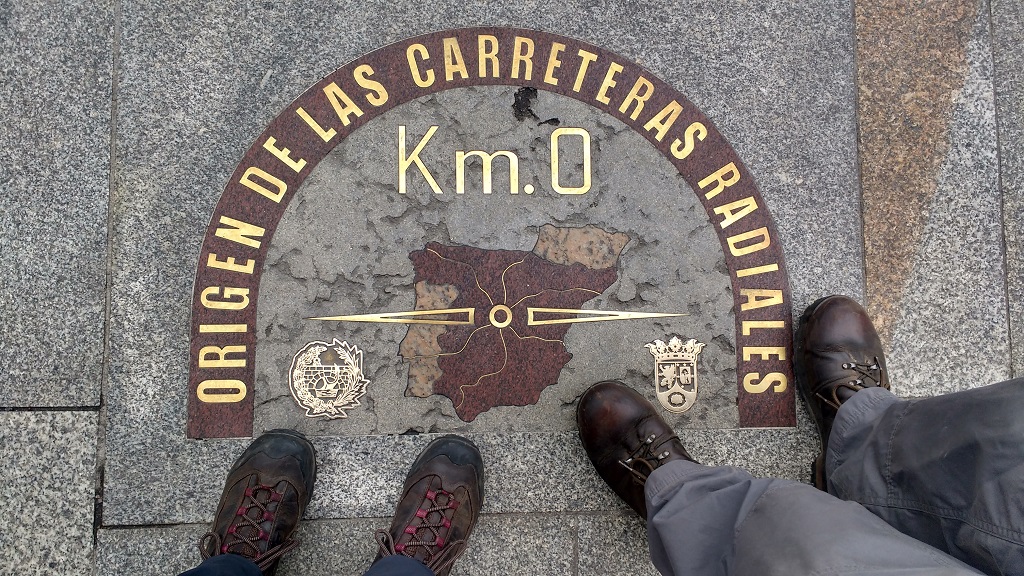
On the flip side, there were relatively few tourists knocking about. We spent all of 0 minutes queuing up for access to museums, and once inside we had plenty of time and space to look at exhibits. The plaza (squares) had a few fellow tourists knocking about, being entertainingly chased around by blokes in various costumes for photo tips (Winnie the Pooh, Super Mario, and weirdly Freddie Kruger). There were plenty of police knocking about too, and although we’d taken the usual pick-pocket precautions of a false wallet in the top of Ju’s backpack (which worked very well in Rome), the city felt safe and pretty laid-back.
Art in Madrid – The Museo Nacional Centro de Arte Reina Sofia
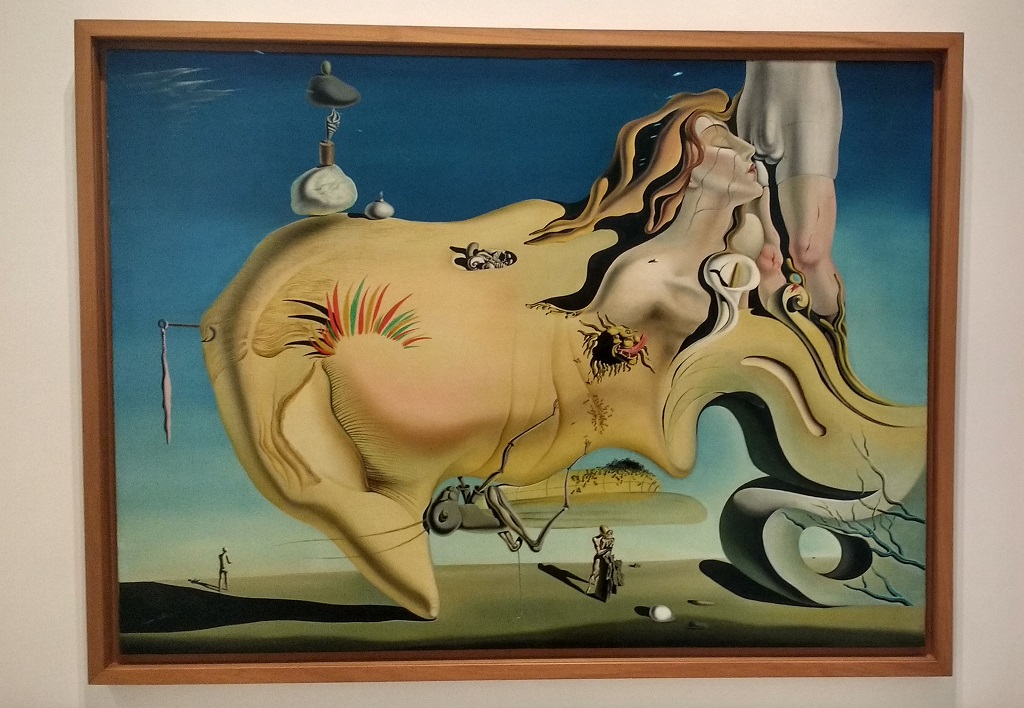
I’ll fess up from the get-go, we didn’t go to the Prado, Madrid’s number one attraction and one of the very best art museums in the world. Why not? I dunno. It looked like it might have a serious amount of religious art in it, and although we’ve nothing against that art form, we’ve seen plenty of it, mainly in Italy, including the Uffizi in Florence, and just couldn’t face it. Feeling a tad guilty, we spent an afternoon in the Museo Nacional Centro de Arte Reina Sofía instead, Spain’s national museum of 20th-century art. After having surprisingly enjoying our trip to the ARoS modern art museum in Denmark, we figured this would be more our sort of thing. Tip: we paid online from a cafe before we walked over to the museum, which reduced the entry from €10 to €8.90 each. You can also get in for free in the evenings two hours before closing, but we’re usually in bed by 9pm (I’m exaggerating, but not by much).
The museum’s spread over four floors and, not being quite sure how to tackle the place we opted to start at the top, taking one of the glass-walled exterior lifts to the top for a pretty cool view of the square below. This, as it turned out, was probably an error. The museum’s more esoteric stuff, shall we say, is stored up there, and checking later we found relatively few visitors make it up there. As a clue, one exhibit was an old sack, part of which was painted black. I’m sure there are all kinds of insightful interpretations to this sort of stuff, but it was doing nothing for either of us two.

The low-down is this: all the good stuff is on the second floor. All the Picasso and Dali stuff is down there (even I’ve heard of these guys), including the big one (literally, as it turned out): Guernica. I suspect most folks know of this painting, which Picasso created in 1937 during Spain’s civil war. In my layman’s terms, it’s intended to illustrate the horror of the town being bombed, killing around 170 to 300 people. It had an overt political aim to support the Spanish government, who ultimately lost the war leading to the painting remaining outside Spain until Franco died and the country transitioned to democracy. It also happens to be physically huge and worth a serious amount of wonga, maybe €200m, so being stood in front of it is itself an experience. On the opposite wall are photographs taken of the painting as it was being created from an initial sketch, showing how details of it changed as it came to life.
The other area of the museum which struck a chord with me personally (again on a morose note, sorry) was a series of drawings and paintings by an Austrian gypsy, Ceija Stojka. Her and her family had been persecuted by the Nazis culminating in them being interned in Auschwitz, Ravensbrück and Bergen-Belson. The paintings start with an idyllic theme, living simple lives in green nature, gradually becoming darker as the persecution starts until they slip deep into the kind of darkness and fear only someone forced to live in these, the worst places on Earth, might understand.
Eating and Drinking in Madrid – Chocolateria 1902 and Casa Rúa
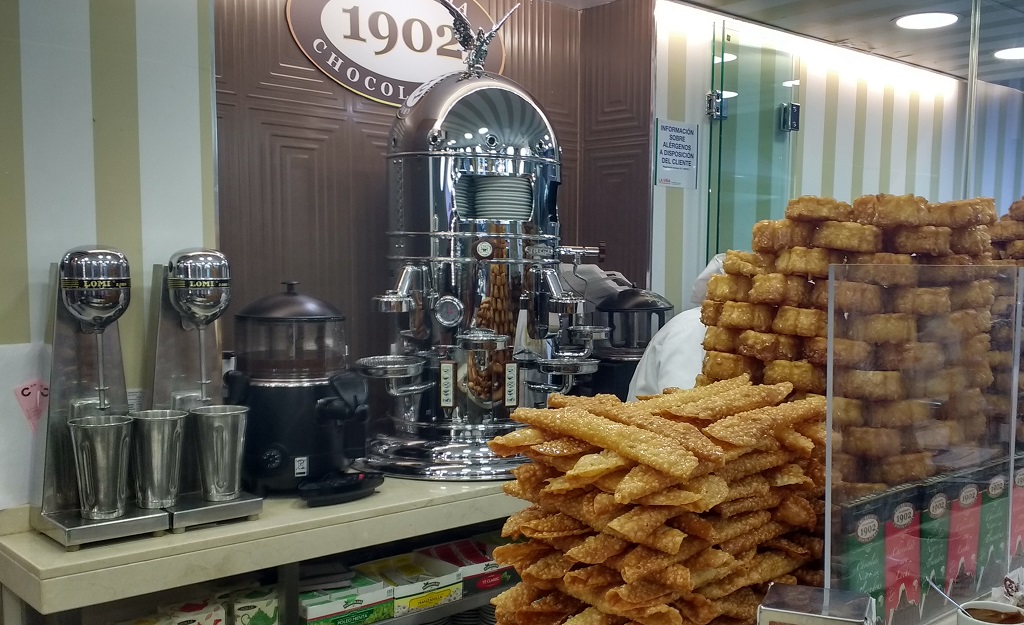
Walking the streets of Madrid it’s clear you’ve a serious choice for stuff to eat! Ju was on a bit of a mission on this front, having gotten the taste for churros (like strings of fried donut dough) and taza de chocolate (thick hot chocolate in a cup) on previous trips to Spain and Portugal, and we’d marked out one place in particular to visit: Chocolateria 1902. As the photo above shows, it’s has a kind of American diner feel to it, complete with waiters in white uniforms ushering folks in and out.
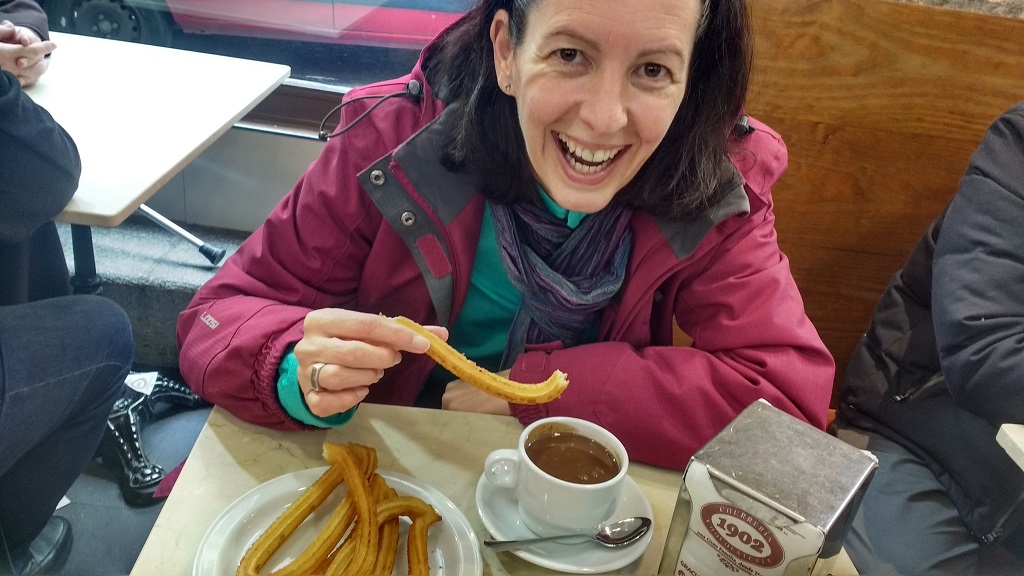
As we sat down, a monk sat down alongside us, complete with sockless feet in sandals. If it’s good enough for him, it was good enough for us! It seemed the kind of place which is clearly a tourist destination, but those tourists were as often Spaniards as not. The hot chocolate wasn’t spoon-standy-uppy mind you, but I enjoyed a delicious espresso, nibbled on Ju’s churros and helped clean the cup, and we left happy.
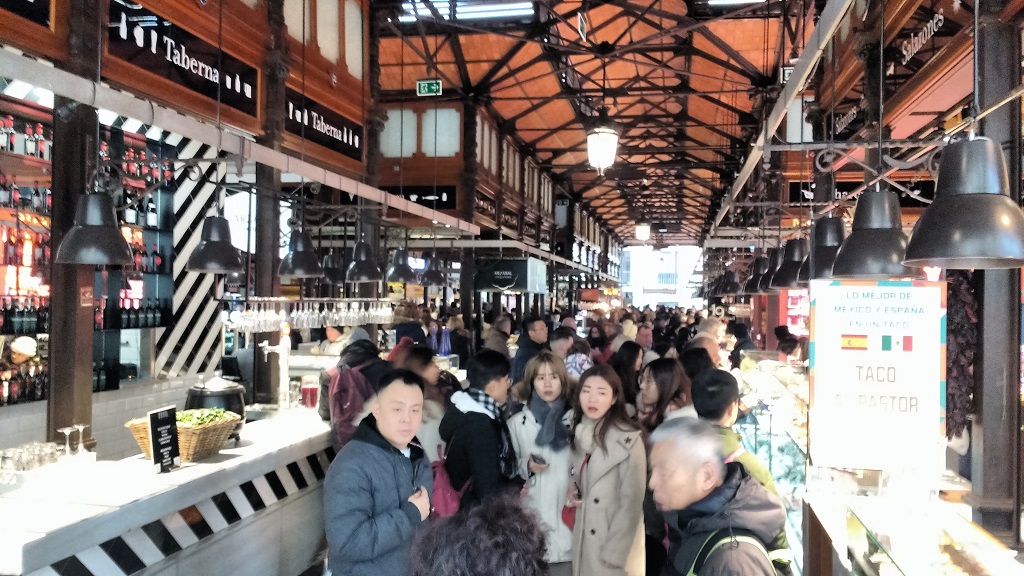
Madrid has a famous indoor eatery called Mercado de San Miguel. It’s not really a market as I think of one, with stalls and cheap jeans being flogged by shouty blokes, but more of an up-market tapas fooderie, complete with bars so you can knock back some vino or ale with your nibbles. The glass-walled building was immaculate inside, all wood, metal and ice, with food so close to art it deserved a place in the Reina Sofia. Even in January it was very busy with tourists, and had a weird kind of authentic-false feel to it, a place where folks come to ‘tick a box’ as much as to enjoy the sensation of eating there. We really enjoyed looking around and grabbing a few photos, but the prices were double what you’d pay for the same stuff outside (it was probably worth it mind you – some of it looked out-of-this-world).
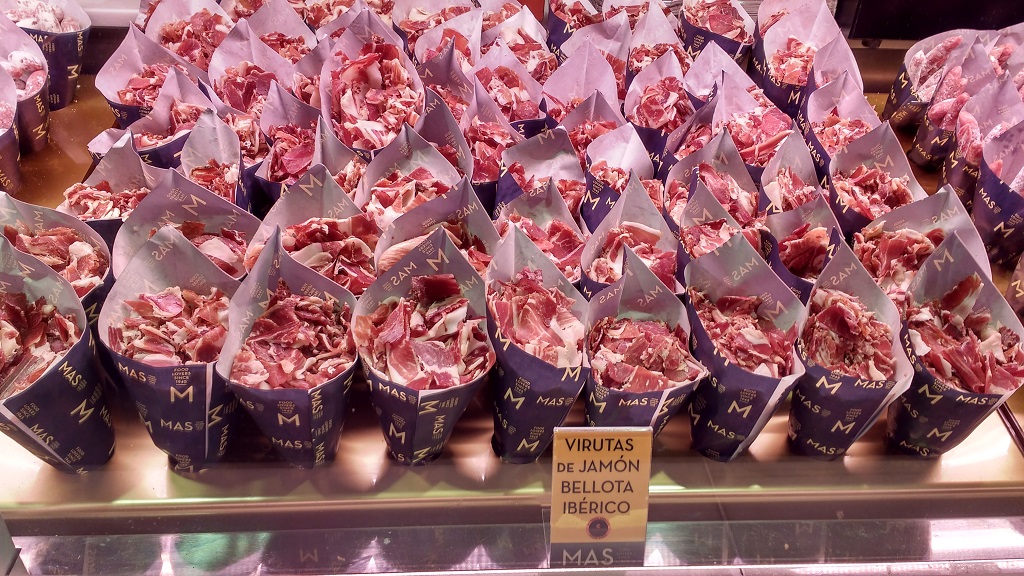
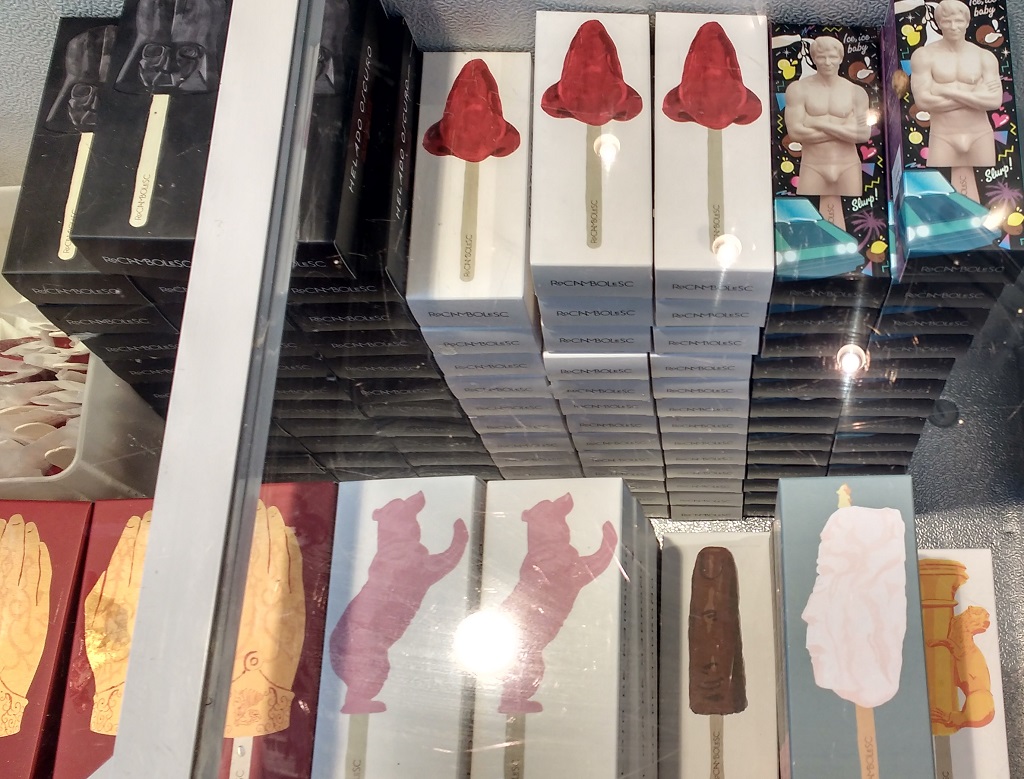
Having opted to save our euros and seek out something perhaps a bit less flashy, we wandered around the corner to Plaza Mayor and spotted a scary-looking cafe front. This looked more like it, squid sandwiches are (apparently) a Madrid specialty and here they were, €3 a pop.
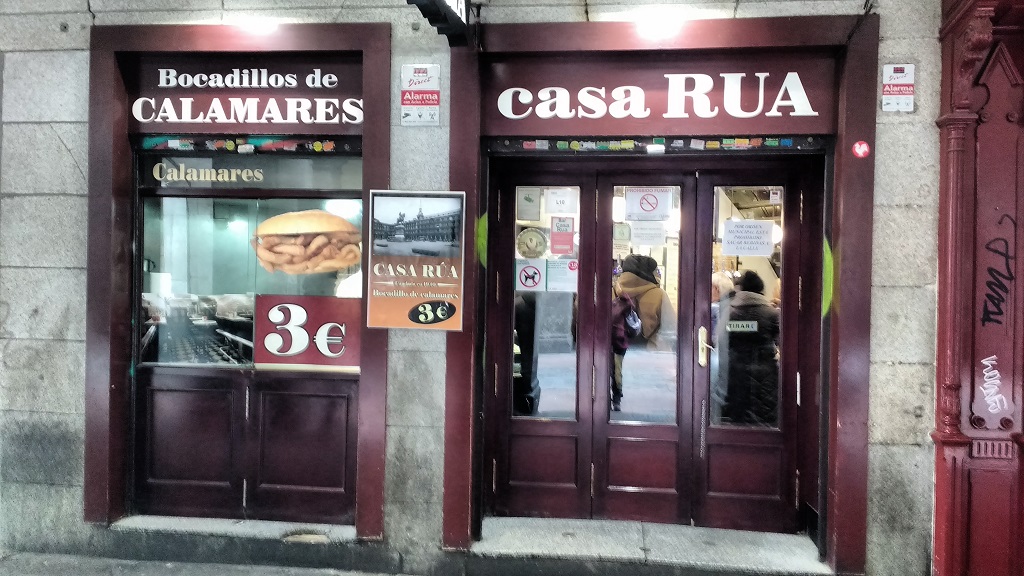
Deep breath, in we go. Casa Rua’s a wedge of real-estate, quite wide at the front and about a meter wide at the back, with tables and chairs squeezed in. The place was quite full, but we were the only tourists in there. Tour groups would definitely be avoiding it as they wouldn’t fit. The chap behind the bar asked what we wanted and after a wee bit of confusion (Ju had the squid, and for variety I asked for a bok-a-dee-ya day mor-thee-ya, when it should have been mor-cee-ya, for blood sausage) we paid up €10 and headed upstairs for a chair with our heart-attack sarnies and two cans of pop. That’s more our style! Look around, everyone else was speaking Spanish, eating and drinking the same stuff as us. Winner.
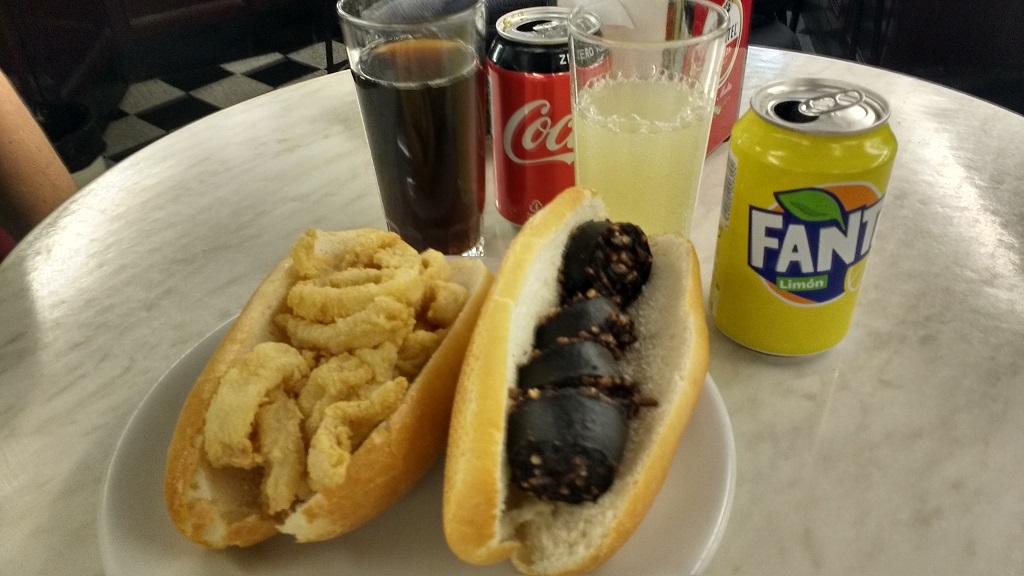
History in Madrid – Museo Arqueologico Nacional
I like art (OK, some art, like the ARoS in Aarhus, Denmark, I loved that place), but I prefer archaeology. We’ve been privileged over the past few years to visit several world-class museums and sights: the Museo Egizio (Egyptian museum) in Turin, the Museo Archeologico Nazionale di Napoli in Naples, the Archaeological Museum of Olympia and the Tomb of Philip II of Macedon in Greece, the list goes on. So it takes a teeny bit of self-shoving to get us into more archaeological museums, although we’re invariably pleased we did once we’re inside. Madrid’s National Archaeological Museum proved well worth visiting, mainly because it concentrated on the history of the Iberian Peninsular, so offered something quite new to us. The place is an absolute bargain at €3 a head too, and we were in there for 4 or 5 hours.
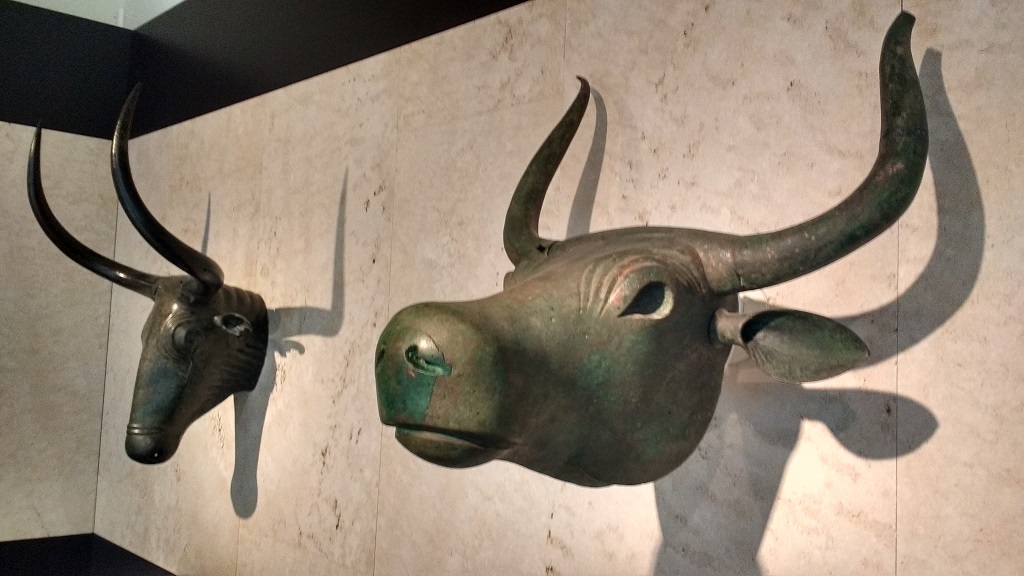
The museum was renovated between 2008 and 2014, and has a slick, contemporary feel to it, with lots of video displays adding dynamism to the static objects around us. I really liked watching a demonstration of how copper ore could be crushed and heated in a charcoal furnace (with several blokes using long blow pipes) to melt out the metal. The video was part of a huge set of items and other videos illustrating how Iberia had slowly, slowly shifted from cave-dwellers and hunter-gatherers all the way through to modern(ish) man. It showed how Spain was influenced from Phoenicia (around Lebanon) and the Celts of northern Europe, how the country was a battleground for the warring empires of Rome and Carthage, how the muslim Moors of Africa had brought great culture for over 500 years before themselves being gradually defeated and looked at Spain’s huge 17th and 18th century empire in the Americas.
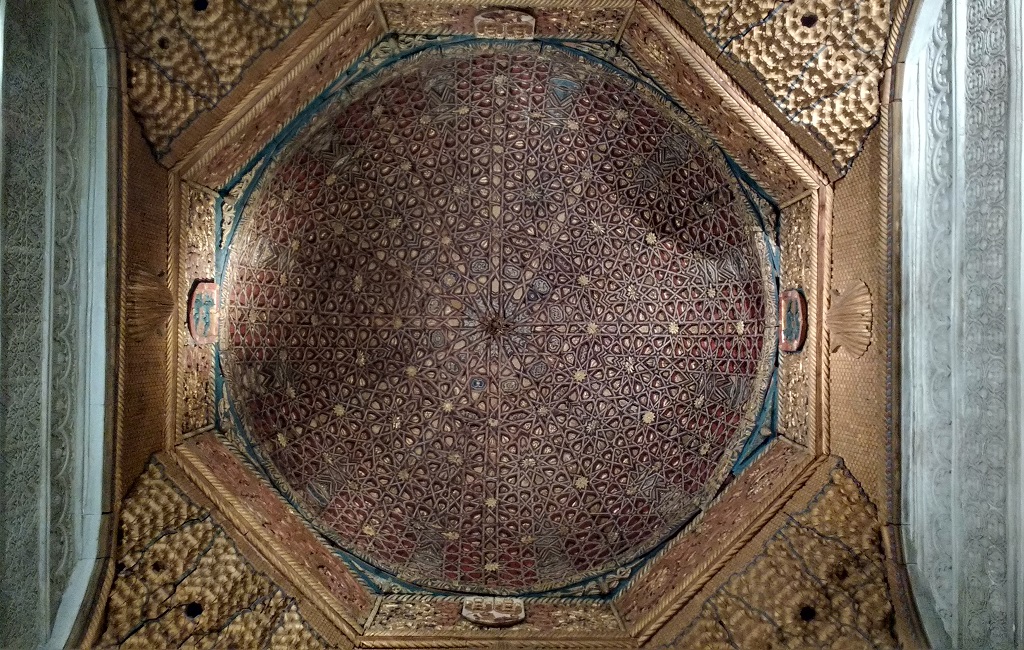
All of the labels and video subtitles were in both Spanish and English, making it much easier for us Brits to understand. Outside the museum there’s a small underground entrance off to one side, which is well worth a quick visit. Inside is a replica of part of the Cave of Altamira, with copies of the prehistoric paintings on the ‘cave’ roof rendered much easier to see by a mirror table below them. Interestingly, the drawings were first identified by an 8 year old girl, who’s father was ridiculed and died a broken man when he tried to bring them to the attention of the authorities of the 19th century.

Sights, Madrid on Foot
We found central Madrid to be compact enough to walk around without using the metro system. The Reina Sofia is very close to the Atocha train station with the archaeology museum a 40 minute walk past the Prado, but most of the other sites we visited were much closer to the Sol station which drops you off under the Puerto del Sol square. From there we wandered over to Plaza Major where Ju grabbed a free map from the tourist office and we headed over to look at the Royal Palace, watching the mounted police prepare to patrol and peering through netted fencing at a huge area of of adjacent road which has been dug up to reveal the remains of walls (and who knows what else) beneath.
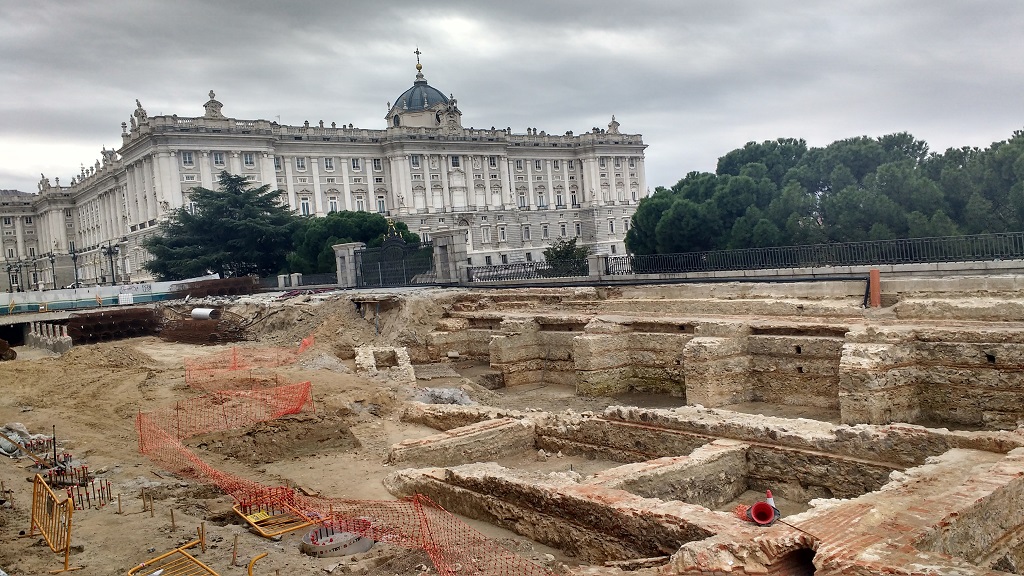
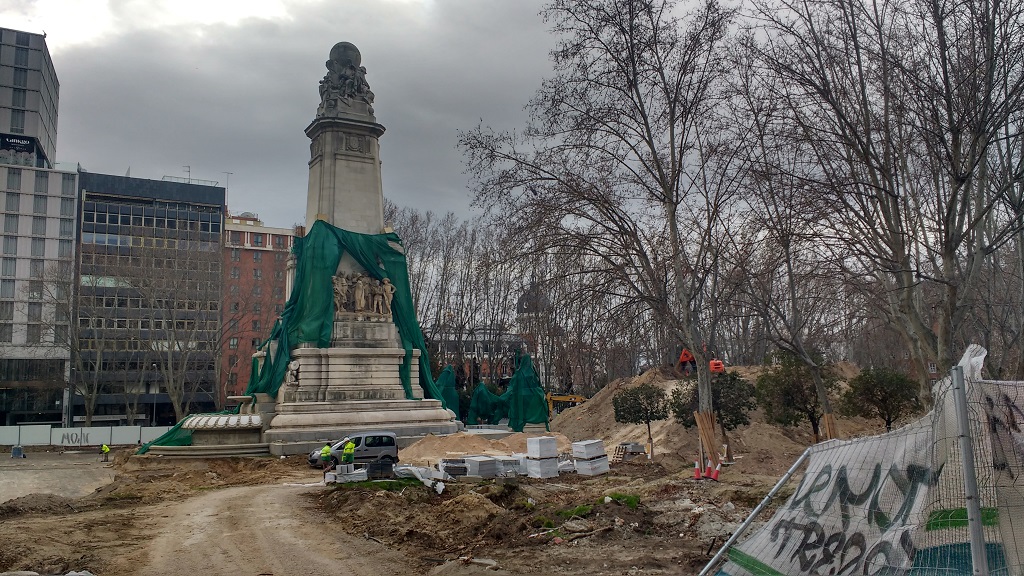
Talking of dug up, almost the entire earth surface of Plaza de Espagne was piled into a central mound when we reached it, and looking it up afterwards the gardens won’t re-open until Feb 2021. Instead we wandered up the Parque del Oeste to get a look at the Temple of Debod. This ancient Egyptian temple, closed and with it’s reflective pool areas dry, was moved stone by stone to Spain to save it from the impending flood created by the Aswan High Dam in 1960. From the rear of the temple an oddity of Madrid’s revealed. From the elevated position we could see the Royal Palace with it’s gardens, which then seem to continue on into what looked to be a forest extending off the the horizon, the Casa de Campo. Having arrived in the city on the train, being rolled through industrial sites like Airbus’ enormous facility complete with its own runway, seeing this green expanse of parkland so close to the centre was a shock. From there we walked back to pick up the Gran Vía (Great Way), one of Madrid’s main roads complete with flashy advertising billboards, boutique shops, restaurants, cafes, topped off with ranks of shuttered windows and balconies.
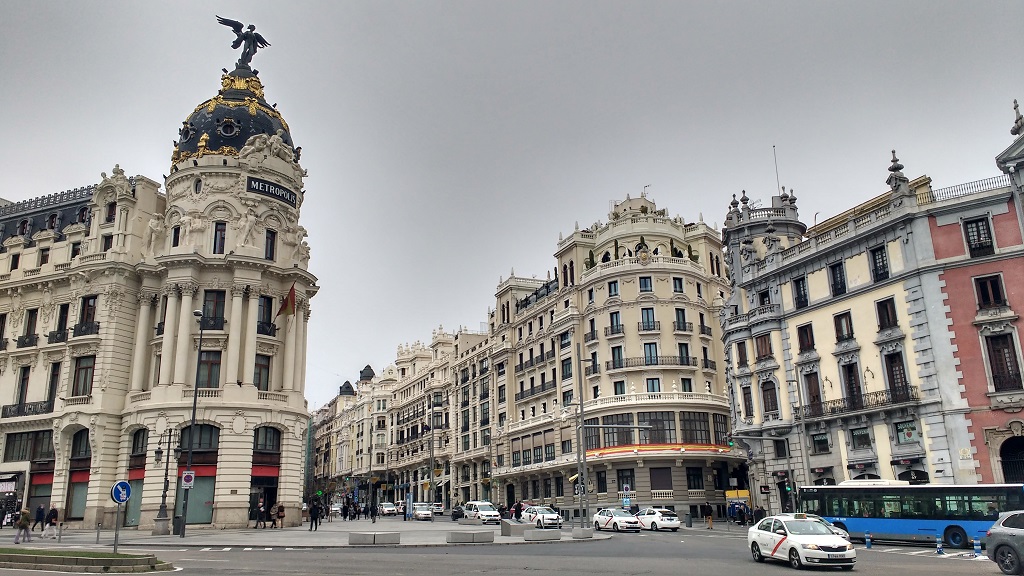
In Summary
Visiting big cities takes a wee bit more energy than smaller towns, cities and countryside wanderings, both before arrival to research the place, arrange where to stay and so on, and of course when you’re there to take in as much as possible in your time there. We felt we gave Madrid as good a go as we could in the couple of days we were there, and it came across as a very clean, safe and laid back place, with wide Parisian-like boulevard streets. The downside of visiting in winter is obvious: it was only a few degrees above freezing with a cold wind, and the many parks and outdoor eating options weren’t appealing. I think if we return we’ll try and time it for the spring or autumn, when the city isn’t roasting hot but it’s being dusted in snow either!
Cheers, Jay

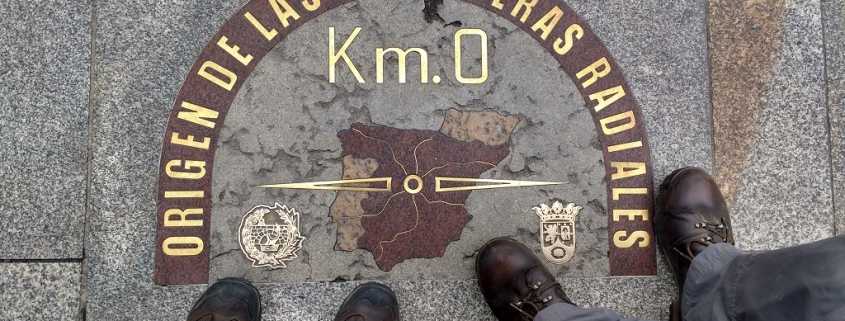
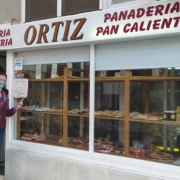
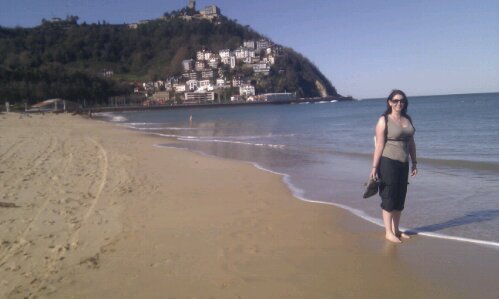
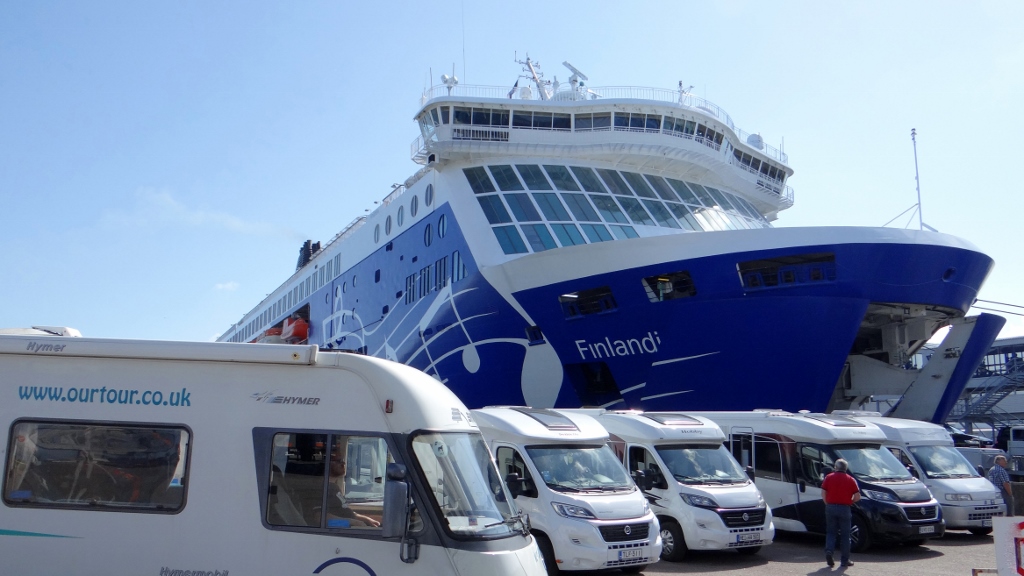
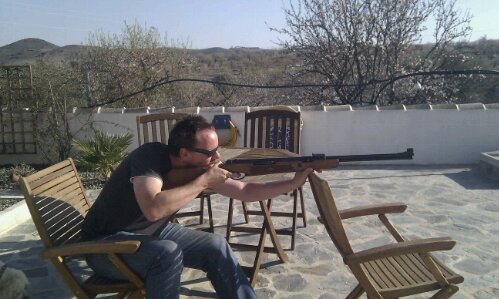
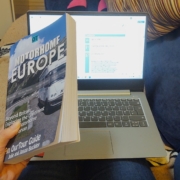
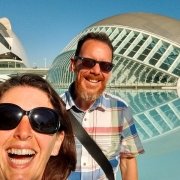
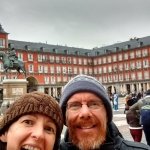
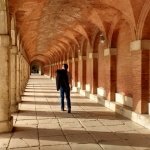
Great info on Madrid, thanks. We always do a ‘let’s visit Madrid this trip’, get close and change our minds as we are not really big city people…..apart from Seville that is. We love it there!!!
Same here, we’re not really city folks but Madrid proved pretty easy to visit. It was really cheap too, €24 for 3 nights on the aire, €20 for train tickets for 2 days, entrance fees of €3 and €8, bocadillos for €3 and menu del dia for €13 or less. Amazing value I reckon. Cheers, Jay
Wow, 24 euros for 3 nights? Cheap as chips for such a wonderful city! What a wonderful ‘Visit Madrid in a nutshell’ brochure you have written. Enjoyed it and will keep all the tips in mind if we ever get there …
Thanks! Enjoy the rest of your trip!
Hi, Looks like you are having a good time and eating well.
Thank you for the tip on the A3 road atlas of France, I have been glued to it!
Have fun
Richard
I have only experienced Madrid in summer/autumn, when the weather was a very friendly 25c,so I enjoyed your commentary of winter there. Madrid was my first introduction to churros and the thick, thick chocolate, I’m drooling just thinking about it..
You fitted a lot into just a few days, mind you, if it was cold, you’ll have wanted to keep moving!
The chocolate helped keep me warm – any excuse eh?!
Ju x
Oh no! Guys, you should have gone in the Royal Palace. Its amazing, but no photos allowed. It’s so different from our stately homes very ott, but then it is a Royal Palace. We’ve been twice, it’s well worth the few euros entrance fee, which includes the boat museum on the way back to the campsite. SuJo